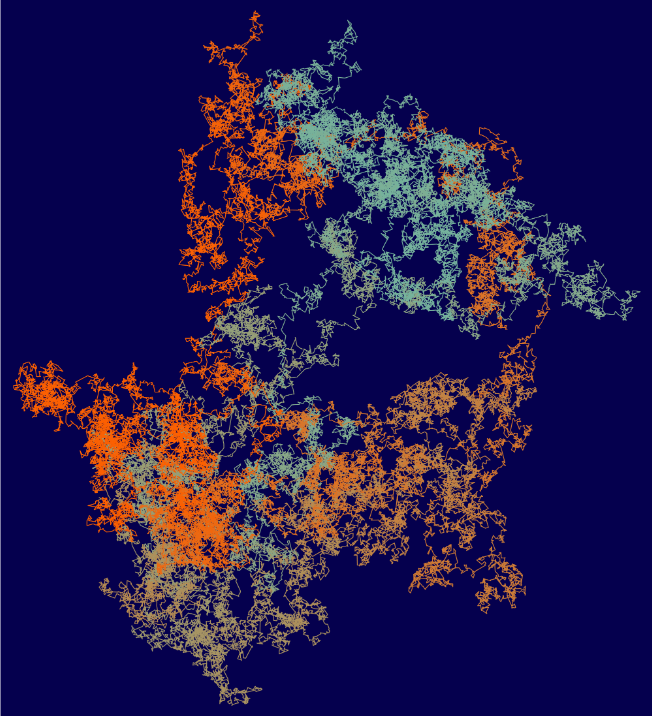

|
A random 100,000-gon in the plane. Source: Clayton Shonkwiler, Stiefel manifolds and polygons,
|
DescriptionIn 1895, the mathematician Charles L. Dodgson, better known as Lewis Carroll, posed the following problem: Three points are taken at random on an infinite plane. Find the chance of their being the vertices of an obtuse-angled triangle. The problem admits several interpretations and different solutions have been given by many authors, including Carroll himself. Moreover, one may also ask a similar question for more general figures, such as polygons. The solutions to these questions bring together differential geometry and probability theory and lead to applications in shape classification and computer vision. Prerequisites and CorequisitesInitially, the project will focus on classical interpretations of Carroll's problem in Euclidean space and requires nothing more than an understanding of Euclidean (planar) geometry and some basic understanding of probability. As the project progresses, it would be useful to be familiar with some parts of (or taking) the modules Probability II, Analysis III, Geometry III, Topology III and Differential Geometry III, but most things can be covered as needed. In particular, the project will touch on
Some Resources
|
email: M Kerin